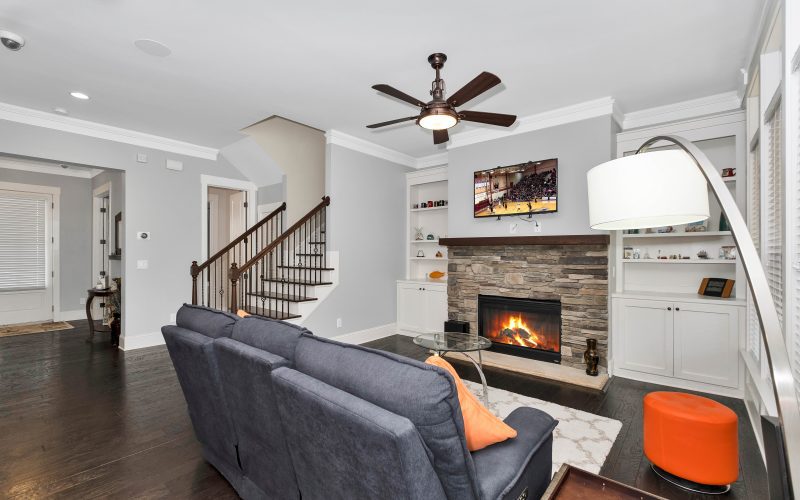Introduction
Welcome to the future of real estate! In just a few short years, homes will be filled with futuristic features that we could only dream of today. From intuitive technology that controls everything from lighting to security, to eco-friendly systems that reduce energy consumption and promote sustainability, the homes of tomorrow are set to revolutionize the way we live. So get ready to discover the top 10 features that will define the real estate industry in 2023 and beyond – it’s time for an exciting glimpse into our dazzling housing future!
Top 10 Real Estate Industry Trends for 2023
The future of the real estate industry is always changing and adapting to new technologies, consumer demands, and economic conditions. As we move into 2023, here are 10 top trends that will define the industry:
1. The rise of proptech: Technology is changing every aspect of the real estate industry, from how properties are marketed and sold, to how they’re managed and operated. This is often referred to as “proptech” (property + technology).
2. Increased demand for sustainability: Sustainability is no longer a “nice-to-have” – it’s now a key consideration for many consumers when they’re searching for a new home. This includes features like solar panels, energy-efficient appliances, and water conservation measures.
3. A focus on health and wellness: In addition to sustainability, health and wellness are also top of mind for many homebuyers. This includes features like air purification systems, natural lighting, and ergonomic design.
4. The need for more flexible space: With more people working remotely than ever before, there’s an increased demand for homes that offer more flexible living space. This could include things like a dedicated home office, a multipurpose room that can be used as a gym or playroom, or even an outdoor living space.
5. A boom in suburban growth: After years of urbanization, there’
Connected Homes
1. Connected Homes: Discovering the Top Features that will Define the Real Estate Industry in 2020 and Beyond
In recent years, we have seen a surge in the development of connected homes – homes that are equipped with internet-connected devices that allow homeowners to control their environment remotely. This trend is only expected to grow in the coming years, as more and more people seek out ways to make their lives more convenient and efficient.
So, what exactly are connected homes? And what kinds of features can we expect to see in them? Here’s a quick guide:
What are connected homes?
Connected homes are residences that contain internet-connected devices, which allow homeowners to control various aspects of their home remotely. This can include things like heating and cooling, lighting, security systems, appliances, and more.
One of the main benefits of connected homes is that they offer greater convenience than traditional homes. For example, you can use your smartphone to adjust the thermostat before you even walk through the door. Or, you can set your oven to start preheating while you’re on your way home from work.
In addition to providing greater convenience, many of these devices also have energy-saving features that can help reduce your monthly bills. And as technology continues to advance, we can only expect these devices to become more sophisticated and energy-efficient.
What features can we expect in connected homes?
Green Technology
Green technology is one of the most important features that will define the real estate industry in the future. It is estimated that by 2050, nearly all new homes will be built with some form of green technology. This could include solar panels, wind turbines, rainwater harvesting systems, and other energy-efficient features.
Solar panels are a type of green technology that is becoming increasingly popular in the real estate industry. They are used to generate electricity from sunlight and can be used to power your home or business. Solar panels can also be used to heat water for your home or business.
Wind turbines are another type of green technology that is becoming popular in the real estate industry. Wind turbines generate electricity from wind energy and can be used to power your home or business.
Rainwater harvesting systems are a type of green technology that collects rainwater and stores it for later use. This water can be used for watering plants, flushing toilets, or other uses around your home or business.
Energy-efficient windows are a type of green technology that helps to reduce the amount of energy needed to heat and cool your home or business. Energy-efficient windows are made with special glass that reflects heat back into your home or business during the winter months and keeps heat out during the summer months.
The Rise of the Co-Living Space
The co-living space is on the rise as more and more people are looking for alternative living arrangements. Co-living spaces offer a unique opportunity for people to live in close proximity to one another while still maintaining their independence. These spaces typically include shared common areas, such as kitchens, living rooms, and laundry facilities, which allow residents to interact with one another on a daily basis.
Co-living spaces have become increasingly popular in recent years as the cost of living has risen and people have become more mobile. These spaces offer an affordable option for people who want to live in desirable locations without having to pay for a traditional apartment or home. In addition, co-living spaces provide an opportunity for people to meet new friends and build community.
As the demand for alternative living arrangements continues to grow, it is likely that the co-living space will continue to rise in popularity. If you are considering moving into a co-living space, be sure to research different options and find a space that best suits your needs.
Flexible Floor Plans
When it comes to floor plans, tomorrow’s homes will be more flexible than ever before. Thanks to advances in technology, homeowners will be able to easily change the layout of their home to suit their needs. For example, walls can be moved to create new rooms or enlarged living spaces.
In addition, tomorrow’s homes will be designed with sustainability in mind. Floor plans will be optimized to take advantage of natural light and ventilation, resulting in lower energy bills. And, as more people work from home, comfortable home office spaces will become a must-have feature.
Smart Home Devices
There is no doubt that home automation technology is becoming more and more popular, with smart home devices making our lives easier and more convenient. From thermostats and security systems to lighting and entertainment, there are a variety of smart home devices available on the market today. And as the demand for these devices increases, so does the competition among manufacturers.
So, what are some of the top features that will define the real estate industry in the future?
1. Smart Home Devices: As mentioned above, smart home devices are becoming increasingly popular, with more and more homeowners looking to automate their homes. While many of these devices are still relatively new to the market, we expect to see a wide range of new and innovative products being released in the coming years.
2. Connected Homes: In addition to individual smart home devices, we expect to see an increase in the number of connected homes – homes that are equipped with a central network that allows all of the different devices and systems to communicate with each other. This will provide homeowners with even greater control over their homes and allow them to manage everything from a single platform.
3. Increased Energy Efficiency: One of the benefits of automating your home is increased energy efficiency. By installing smart thermostats, for example, you can program your heating and cooling system to run only when necessary, which can save you a significant amount of money on your energy bills. We expect to see more homeowners looking for ways to reduce
Wellness-Focused Amenities
When it comes to the homes of tomorrow, one of the defining features will be a focus on wellness. This could manifest in a number of different ways, from having air purifiers and water filtration systems built into the home to having ample space for yoga and fitness activities.
Another way that wellness will be emphasized in future homes is through the use of smart technology. This could include things like air quality monitors that adjust the ventilation in the home based on pollution levels outside, or automated lighting that creates a calming ambiance in the evenings.
Of course, all of these amenities will be worthless if they’re not coupled with a healthy lifestyle. So, expect to see more homes with access to green spaces and community gardens, as well as plenty of walking and biking trails nearby.
Community-Based Development
As the world progresses, so does the real estate industry. In order to keep up with the changing times, it’s important to be aware of the new features that will shape the homes of tomorrow. By understanding these trends, you’ll be better prepared to make informed decisions about your future home.
One trend that is expected to shape the homes of tomorrow is community-based development. This type of development focuses on creating a sense of community within a neighborhood or development. This can be achieved through various amenities and features such as shared outdoor spaces, common areas, and events.
Another trend that is expected to impact the homes of tomorrow is the rise of smart technology. This technology has the ability to make our lives easier and more efficient. From automated appliances to security systems, there are endless possibilities for how smart technology can improve our homes.
Sustainability is another key trend that will define the homes of tomorrow. As we become more aware of our impact on the environment, we are seeking out ways to reduce our footprint. This includes everything from energy-efficient appliances to solar panels and green building materials.
If you’re looking for a home that will stand the test of time, it’s important to be aware of these trends shaping the real estate industry. By understanding these trends, you’ll be better prepared to find a home that suits your needs now and in the future
The New Role of the Realtor
In order to stay ahead of the curve, realtors must be proactive in understanding the new role that they will play in the real estate industry. As homes become increasingly connected and automated, realtors will need to be well-versed in technology in order to best serve their clients. In addition, realtors will need to be able to provide guidance on home design trends and energy efficiency features.
Conclusion
We have explored the top 10 features that will shape the real estate industry in 2023. From smart home automation systems to health and wellness monitoring, it is clear that homes of tomorrow are set to be more efficient and technologically advanced than ever before. As technology continues to evolve, so too does our understanding of what makes a house truly ‘smart’ and with this knowledge we can begin to create more sustainable living environments for ourselves and future generations.












